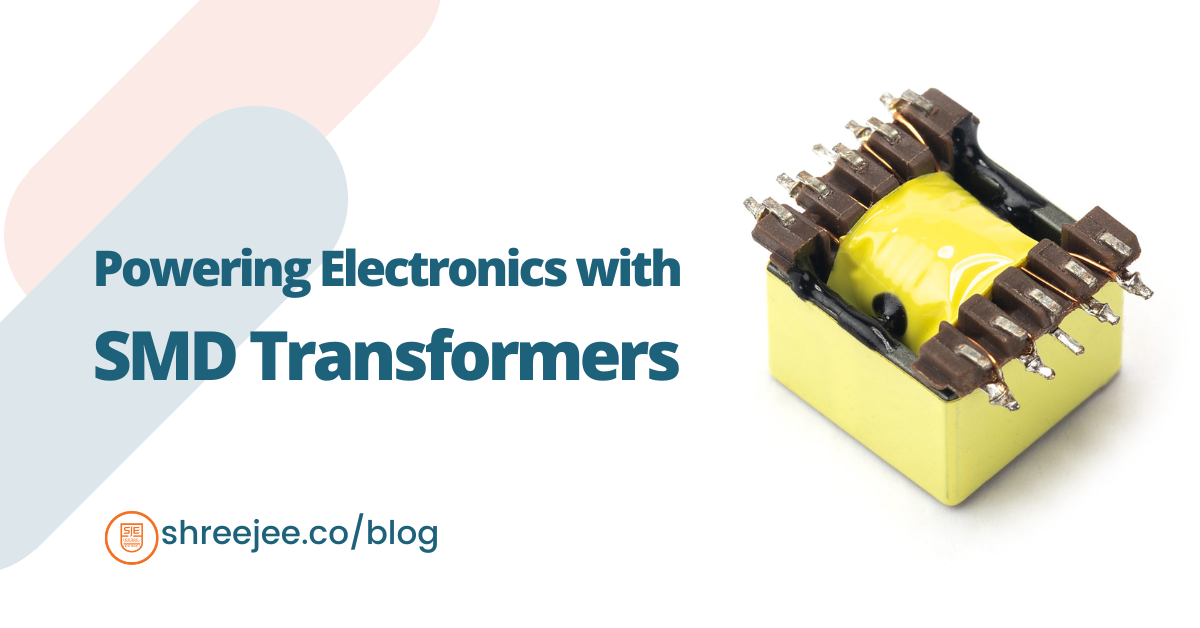Surface-mount Technology (SMT), also known as Surface-Mount Device (SMD) technology, has significantly transformed the electronics manufacturing industry. Components can be placed directly on PCBs.
This leads to smaller parts and denser layouts. It also improves shock and vibration resistance. SMD transformers are crucial for electronic circuits. They are small, efficient, and essential for power transfer and signal isolation.
Key Differences Between SMD and Conventional Transformers
SMT transformers, also known as SMD transformers, utilize bobbins and pins that are designed for surface mounting. Unlike traditional transformers, they have a compact form factor essential in modern electronics where space is at a premium. The planar construction of SMT transformers ensures tight control over primary to secondary leakage inductance and consistent parasitic capacitance. SMT transformers are a cost-effective and efficient option for large-scale production.
Designing SMD Transformers
Designing SMT transformers requires specialized tools and software to ensure precision and reliability. Design tools like Cadence Allegro, Mentor Graphics, and OrCAD assist engineers make accurate layouts and position components efficiently. Engineers often choose FR-4 epoxy resin glass fiber laminates and ferrite polymer composites for the core and bobbin materials. These materials offer excellent thermal and electrical properties, making them ideal for high-frequency applications.
Planar transformers, a subset of SMT transformers, utilize printed circuit windings and integrated PC board magnetics. This approach enhances power density and overall performance while reducing the size of the power supply. Using multi-layer PCBs and specific core geometries like EE, ER, ETD, and PQ cores optimizes the design.
Applications
SMT transformers are versatile components that find applications in various electronic systems. Their primary use is in impedance matching, where they optimize signal transfer between different circuit stages. They are important in power conversion, especially in small profile converters where space and efficiency are important. Furthermore, SMT transformers are employed in current sensing and step-down voltage applications, providing precise measurement and control capabilities.
Working Principles
SMT transformers operate by transferring electrical energy through electromagnetic induction. High-frequency operation is crucial for optimizing efficiency, as it allows for smaller magnetic components and higher power density.
The materials used in SMT transformers, like ferrite cores and polymer composites, have a significant influence on their performance. They help reduce core losses and make the magnetic properties better. SMD transformer testing methodologies, including analyzing impedance and measuring efficiency, ensure these transformers meet the required specifications and perform reliably in various conditions.
Advanced Topics
Coreless PCB Transformers
Coreless PCB transformers eliminate the need for traditional magnetic cores, allowing for high-frequency operation and increased power density. This innovation benefits applications requiring compact and efficient transformers. The design includes windings etched on both sides of a PCB with ferrite polymer composite sheets for magnetic shielding.
Ferrite Polymer Composite (FPC) Sheets
Ferrite polymer composite (FPC) sheets shield magnetic flux and enhance transformer performance. Engineers put these sheets on both sides of the PCB transformer to shield magnetism and make it work better.
Flyback Transformers in Medical Devices
Manufacturers often use flyback transformers in medical devices to provide electrical isolation and efficient power transfer. The design involves winding insulated wire around a magnetic core to form primary and secondary coils, which are then attached to vias on a PCB. This method minimizes component height and improves efficiency by reducing lead resistance, making it ideal for implantable medical devices.
Current Sensing in SMT Transformers
SMT transformers are important for measuring and controlling current in electronic circuits. They are used in power systems to check and control current flow, making sure it runs smoothly and preventing overcurrent. SMD current sense transformers use specialized winding techniques and materials that minimize losses and enhance sensitivity.
Innovative Cooling Techniques
Managing thermal loads in high-power applications is critical for maintaining efficiency and reliability. Advanced cooling techniques, such as optimized PCB layouts and heat dissipation strategies, are essential for handling higher power densities in SMT transformers.
Their unique design and advanced materials make them ideal transformer for modern high-frequency circuits. Engineers can leverage these components to enhance their projects by understanding transformer’s working principles and applications.
Shreejee Electronics offers competitive pricing of custom SMD transformer tailored to meet specific needs, ensuring high performance and reliability in every application. Please contact us to request a quote today.
